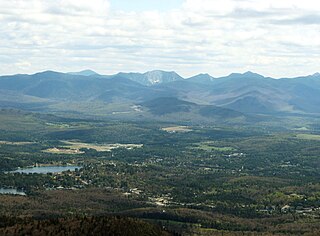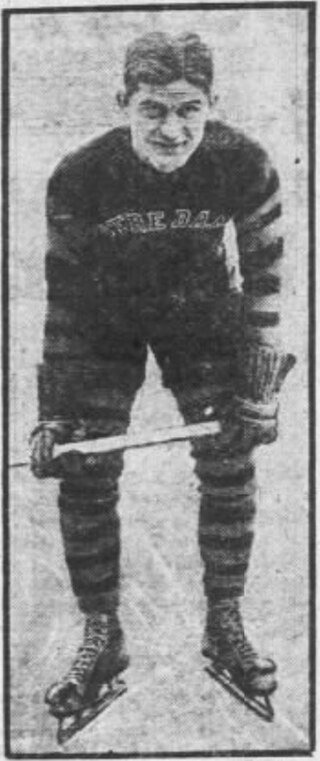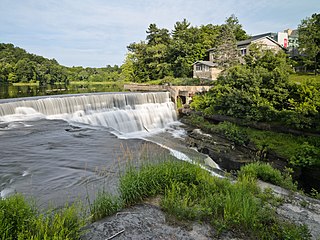Ithaca is a city in and the county seat of Tompkins County, New York, United States. Situated on the southern shore of Cayuga Lake in the Finger Lakes region of New York, Ithaca is the largest community in the Ithaca metropolitan statistical area. It is named after the Greek island of Ithaca. As of 2020, the city's population was 32,108.

Ice skating is the self-propulsion and gliding of a person across an ice surface, using metal-bladed ice skates. People skate for various reasons, including recreation (fun), exercise, competitive sports, and commuting. Ice skating may be performed on naturally frozen bodies of water, such as ponds, lakes, canals, and rivers, and on human-made ice surfaces both indoors and outdoors.

Lake Placid is a village in the Adirondack Mountains in Essex County, New York, United States. In 2020, its population was 2,205.

Ezra Cornell was an American businessman, politician, academic, and philanthropist. He was the founder of Western Union and a co-founder of Cornell University. He also served as President of the New York Agriculture Society and as a New York State Senator.

An ice rink is a frozen body of water and/or an artificial sheet of ice where people can ice skate or play winter sports. Ice rinks are also used for exhibitions, contests and ice shows. The growth and increasing popularity of ice skating during the 1800s marked a rise in the deliberate construction of ice rinks in numerous areas of the world.

Lake Banook is a freshwater lake located in Dartmouth within the Halifax Regional Municipality in Nova Scotia, Canada. It is home to three sprint canoe and kayak clubs, two rowing clubs, and a dragon boat club. It also has a claim to be the birthplace of ice hockey.
Cornelliana is anything related to Cornell University, an Ivy League university founded in 1865 in Ithaca, New York, United States. The university has a considerable number of traditions, legends, and lore unique to the university that have developed over its existence, which spans over 150 years.
Peaks Ice Arena is an indoor ice hockey and figure skating arena in Provo, Utah, located 43 miles (69 km) south of Salt Lake City. Along with the Maverik Center in West Valley City, it was built as an ice hockey and figure skating practice venue for the 2002 Winter Olympics. It currently serves as the home of the Utah Valley University men’s ice hockey team, Peaks Youth Hockey Association, several high school teams, the Peaks Figure Skating Club, and a Learn-to-Skate USA program for beginning skaters of all ages.

David F. Hoy Field, usually referred to simply as Hoy Field, was a baseball field at Cornell University in Ithaca, New York. It was home to the Big Red baseball team from 1922 to 2022, when the team moved to a newly constructed facility east of campus, Booth Field. The former Hoy Field was demolished in 2023 to make way for a new building for the Ann S. Bowers College of Computing and Information Science.

The Cornell Botanic Gardens is a botanical garden located adjacent to the Cornell University campus in Ithaca, New York. The Botanic Gardens proper consist of 25 acres (10 ha) of botanical gardens and 150 acres (61 ha) of the F. R. Newman Arboretum. The greater Botanic Gardens includes 40 different nature areas around Cornell and Ithaca, covering 4,300 acres (1,700 ha).

North Campus is a mostly residential section of Cornell University's main campus in Ithaca, New York. It includes the neighborhoods located north of Fall Creek. All freshmen are housed on North Campus as part of Cornell's common first-year experience and residential initiatives.

The Cornell–Harvard hockey rivalry is a men's ice hockey sports rivalry between the Big Red of Cornell University and Crimson of Harvard University dating back to 1910.

Central Campus is the primary academic and administrative section of Cornell University's Ithaca, New York campus. It is bounded by Libe Slope on the west, Fall Creek on the north, and Cascadilla Creek on the South.
Palgrave Pond is a reservoir just northwest of the community of Palgrave in the Town of Caledon, Regional Municipality of Peel in the Greater Toronto Area of southern Ontario, Canada. It is adjacent to Ontario Highway 50 and was formed by the damming of the main branch of the Humber River, originally to create a mill pond. Each winter, the surface of the pond is transformed into a community skating rink available for recreational use. The rinks are created by local volunteer, Ken Hunt, and have appeared on the Mill Pond each winter since December 2000.

Arthur Benjamin "Bud" Boeringer was an American football center at the University of Notre Dame. Minnesota native Boeringer was a consensus All-American in 1926. After college, he coached both football and hockey at the collegiate level including being a head coach of the University of Detroit and Cornell University ice hockey teams.

Triphammer Falls is a 55-foot (17 m) waterfall on Fall Creek in Ithaca, New York, located within the campus of Cornell University. The waterfall existed naturally but was altered substantially in order to construct a dam in the 19th century, leading to the formation of Beebe Lake. The dam is capable of regulating the water flow between 12–4,700 cubic feet (0.34–133.09 m3) per second. In 1997, a pedestrian bridge was built over Triphammer Falls to connect Central and North Campus.

The 1935–36 Cornell Big Red men's ice hockey season was the 29th season of play for the program. The teams was coached by Nick Bawlf in his 14th season.

The 1939–40 Cornell Big Red men's ice hockey season was the 33rd season of play for the program. The teams were coached by Nick Bawlf in his 18th season.

The 1941–42 Cornell Big Red men's ice hockey season was the 35th season of play for the program. The teams was coached by Nick Bawlf in his 20th season.
The 1925–26 Clarkson Golden Knights men's ice hockey season was the 6th season of play for the program. The team was coached by Gordon Croskery in his 3rd season.















